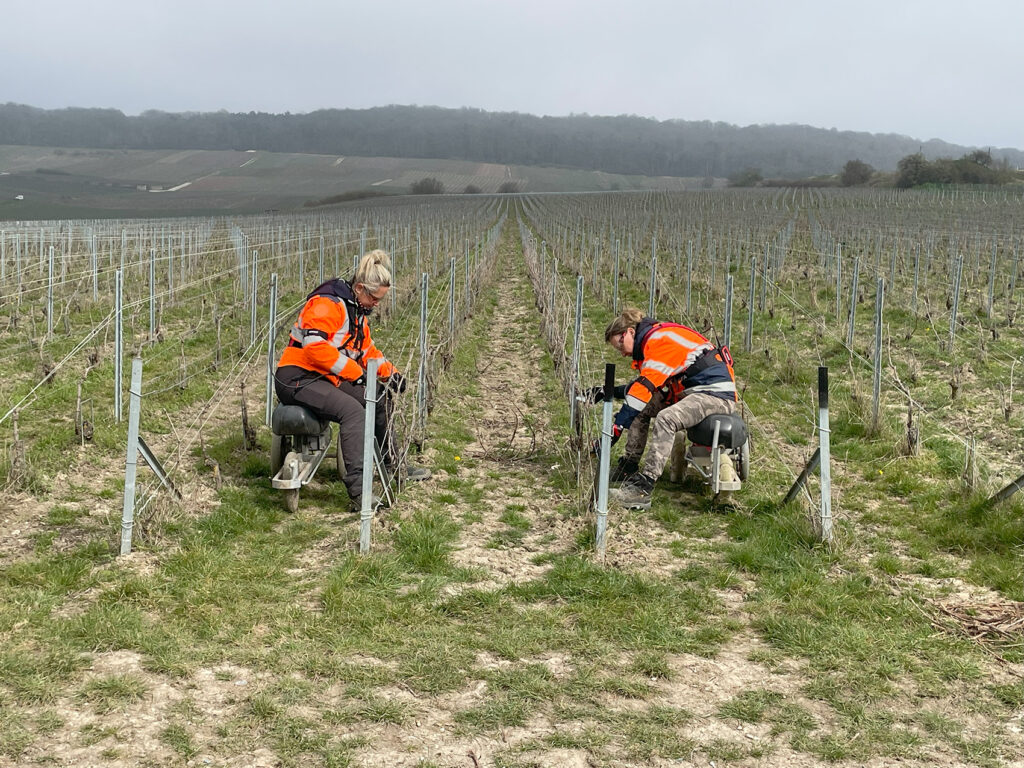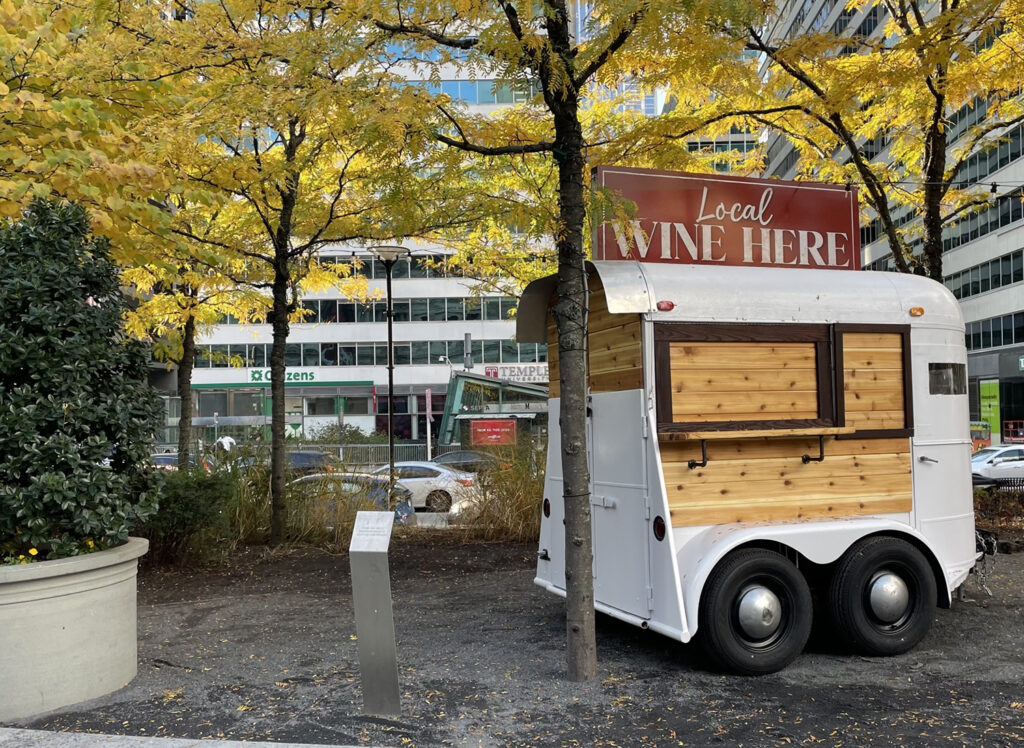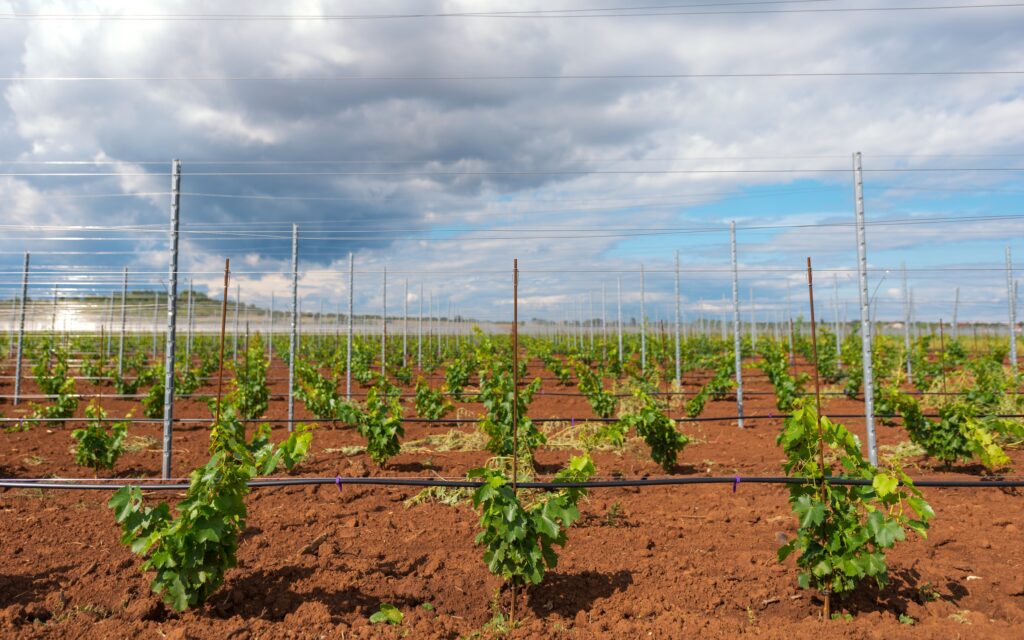How the right tools and timing shape vineyard success

By Alyssa L. Ochs
In today’s modern vineyard, pruning means much more than just cutting off old canes and spurs so grapes can grow to produce wine. In fact, pruning goes far beyond routine maintenance because this vineyard task directly shapes the health, yield, and longevity of grapevines for the future.
Pruning is both an art and a science that requires the right timing, techniques, and tools to set the stage for a successful growing season. When you tailor your vineyard’s pruning strategies to your unique varietal, climate, and business goals, you can make informed cuts today that ensure vineyard success for many years to come.
To learn more about this topic, we connected with Francisco Pardo, director of INFACO USA. Pardo shared details with us about the tools needed for all phases of pruning, how to improve vine health through pruning and how to manage weather and safety risks for a successful harvest.
The Phases of Pruning and Why Tools Matter
INFACO is a pioneer in developing electric tools for vineyard maintenance, with 40 years of expertise and a range of viticulture solutions for all pruning stages.
Pardo walked us through the phases of pruning throughout the year to emphasize the importance of using the right tools and techniques and the benefits of doing so.
Phase 1: Pre-Pruning (Optional Mechanized Pass)
In late fall or early winter, after harvest and leaf drop, the pre-pruning phase begins. The goal of this first phase is to reduce canopy bulk and cut long shoots, making manual pruning easier.
You can use mechanical pre-pruners or rough-cut tools to reduce the volume. However, electric pruning shears, such as INFACO F3020, bypass mechanized pre-pruning and let vineyard workers cut through thick canes quickly with minimal effort. INFACO F3020 electric pruning shears weigh only 1.5 pounds and have an extended battery life to support up to eight hours of continuous work.
Using the right tools at this stage reduces worker fatigue during the initial heavy cuts and improves productivity early in the pruning cycle.
Phase 2: Spur or Cane Pruning (Primary Pruning) The second and primary pruning phase occurs during winter dormancy, typically between December and February, depending on your region. The goal during this phase is to choose and retain essential canes and spurs that will produce next year’s crop while removing all others.
Electric pruners like the INFACO F3020 help workers make consistent cuts close to the cordon and cane base.
INFACO’s safety systems protect workers from cut injuries, while its multiple blade sizes and heads help workers adapt to various applications without needing to switch tools.
The results are faster, cleaner cuts with lower risk of vine disease, plus uniformity across blocks and reduced employee hand strain during long workdays.
Phase 3: Sucker Removal / Green Pruning (Spring/Early Summer) After bud break and through early summer, the pruning goal is to remove non-productive shoots and suckers from trunks and crowns. Lightweight shears and smaller INFACO heads are ideal for efficiently removing green shoots. Some vineyards use a combination of manual tools and electric models to increase pruning speed. With the right tools, you’ll maintain optimal airflow and light penetration while protecting the vine structure.
“At each stage, the right tools are essential,” Pardo said. “For example, the INFACO F3020 electric pruner offers precision and power for clean, uniform cuts that reduce disease risk and protect vine health. Also, by eliminating hand fatigue and inconsistencies between workers, the right equipment helps vineyard crews maintain high-quality results, block after block.”
How Pruning Impacts Vine Health and Pitfalls to Avoid
Proper pruning addresses more than yield management; it extends to long-term vine health, with balanced wood, good airflow, and a canopy structure that’s disease-resistant and promotes even ripening.
Pardo shared with The Grapevine Magazine that one mistake he commonly sees in vineyards is over-pruning and removing too much old wood, which weakens the vines. He also said that leaving stubs and ragged cuts can create infection sites. Meanwhile, inconsistent pruning across crews leads to uneven growth and can disrupt harvest timing.
“With electric tools, growers can achieve consistent, clean cuts, helping reduce cane dieback and improving overall vine longevity,” Pardo said.
Timing It Right by Understanding Bud Development
Another important aspect of pruning is timing everything right. Pruning too early in the season can expose your grapevines to frost damage. But if you prune too late, you could face uneven bud break and reduced vine vigor.
INFACO encourages grape growers to monitor bud swell and delay pruning in frost-prone areas until the buds have visibly developed. INFACO also recommends starting with less sensitive blocks of vines and with the less frost-prone vines first. Additionally, paying attention to key indicators like sap flow or weeping can let you know when the vines are metabolically active and ready to heal.
“Using these cues, along with weather forecasting, helps growers align timing with optimal vine response,” Pardo said.
Managing Weather Risks During Pruning Season
There’s no denying that global weather patterns are becoming increasingly unpredictable and that climate plays a critical role in how vineyards must approach pruning.
For example, Pardo noted that cold snaps after early pruning sessions can cause tissue damage, especially in early-budding varieties. Another weather-related risk is excess moisture, which increases the risk of the fungi Eutypa and other trunk diseases, which can cause delayed shoot emergence and dwarfed leaves if you make pruning cuts during rain. Also, if your area experiences a warm early spring, bud break can occur earlier than expected, limiting your optimal pruning windows.
To adapt to these weather risks, Pardo at INFACO recommends delaying pruning in high-frost areas and pruning only the tops of the vines early, while finalizing cuts later. He also suggests avoiding pruning within 48 hours of forecasted rain whenever possible. Another tip is to segment your vineyard by block sensitivity and prune in phases rather than all at once or randomly.
“Flexibility, combined with fast, efficient tools, helps you stay ahead of the curve,” Pardo said.
Improving Pruning Safety with the Right Equipment
However, worker safety is paramount during pruning activities and must be made a top priority in every vineyard setting. Pruning is one of the most labor-intensive and injury-prone tasks in all of vineyard management. Especially during long shifts, many workers experience repetitive strain injuries, hand and arm fatigue and accidental cuts while doing pruning work.
“At INFACO, safety is a priority,” Pardo said. “The F3020 is compatible with a new and unique touchless safety system, which creates an invisible safety zone that instantly opens the blade if the operator’s other hand comes too close. This is especially valuable in tight canopies or team environments.”
Pardo also recommended that vineyard workers use ergonomic tools to reduce the risk of repetitive strain injury while pruning. Vineyard managers must provide regular training and reminders on cut techniques and proper tool maintenance to ensure safety and equipment longevity. Employers can also help keep their workers safe by encouraging them to take breaks during high intensity pruning days to prevent dangerous mistakes, fatigue, and pain.
“Safer workers are more productive—and more likely to return next season,” Pardo added.
Final Thoughts about Pruning Tools and Timing
Precision pruning isn’t just about shaping vines; it’s about shaping outcomes in a vineyard. From pre-pruning tasks to winter dormancy and early summer green pruning, every phase plays a distinct role in supporting consistent yields and preventing disease.
When planned and executed mindfully, pruning in the vineyard can improve airflow to your grapes, increase sunlight penetration, and promote balanced growth. The result will be stronger, healthier vines that are able to deliver high-quality fruit year after year.
In addition to using the proper tools and techniques, pruning is also about ensuring the right preparations and protections are in place. From early frosts to heat waves and heavy rains, extreme weather events require flexible pruning strategies that adapt to changing conditions. Meanwhile, consistent safety-conscious practices will keep your workers injury-free and efficient, fostering a positive workplace environment and an initiative-taking approach to vineyard management.
Fortunately, there are viticulture-focused companies like INFACO that can help guide you toward the best tools and advice for your unique vineyard operations and pruning needs.
“At INFACO, we’re proud to support growers with innovative, professional-grade tools that combine power, safety and reliability to meet the demands of modern viticulture,” Pardo from INFACO said.










